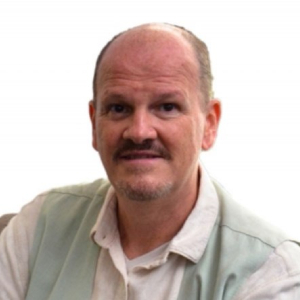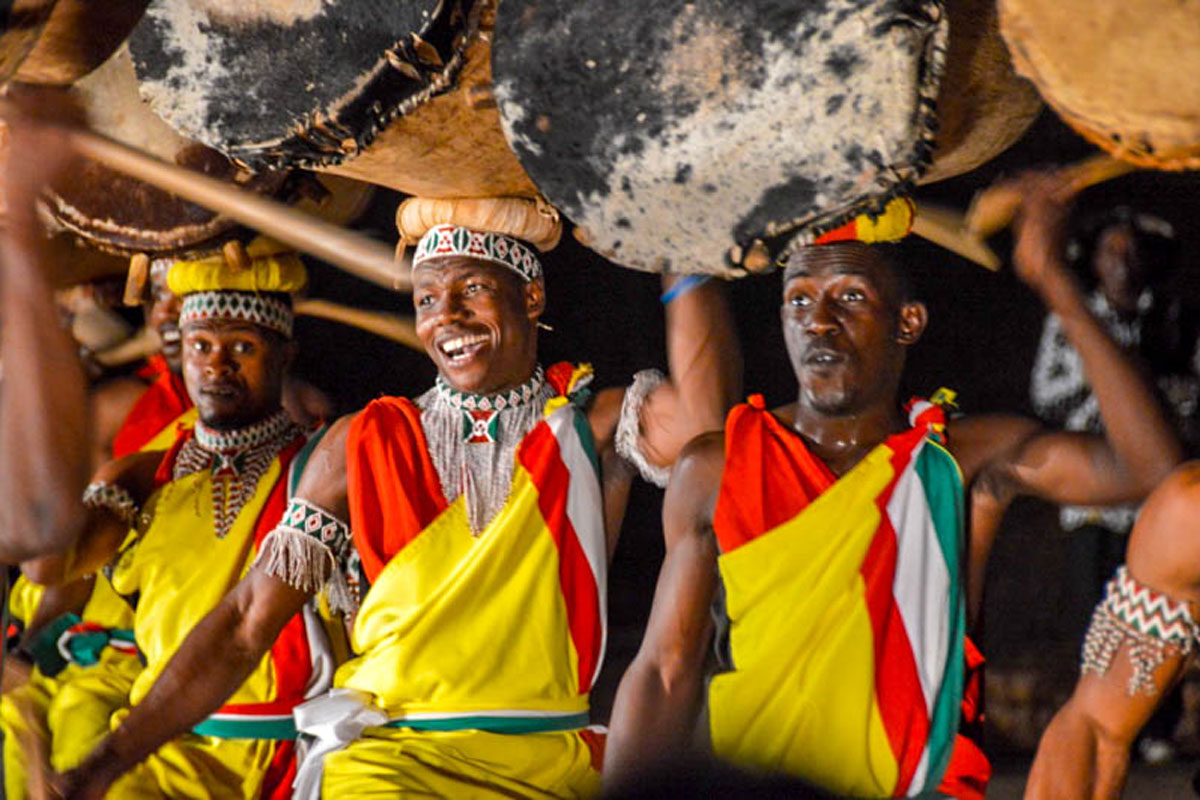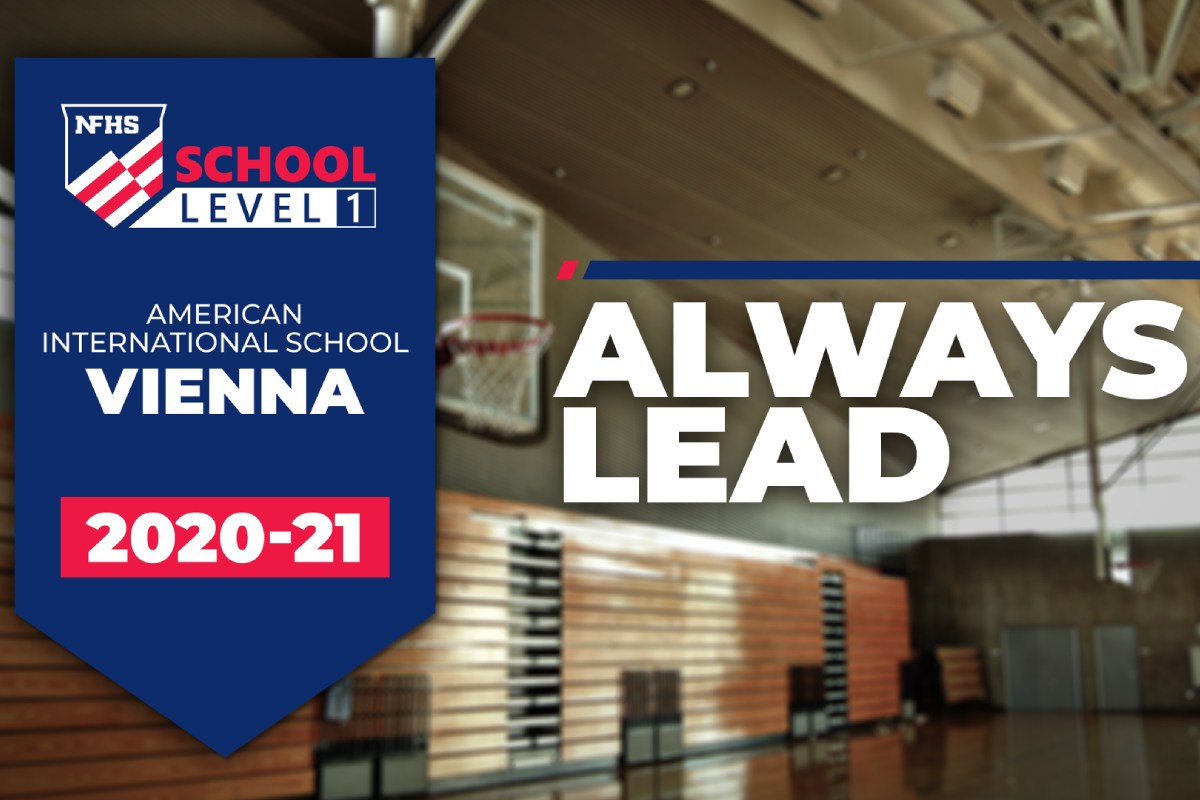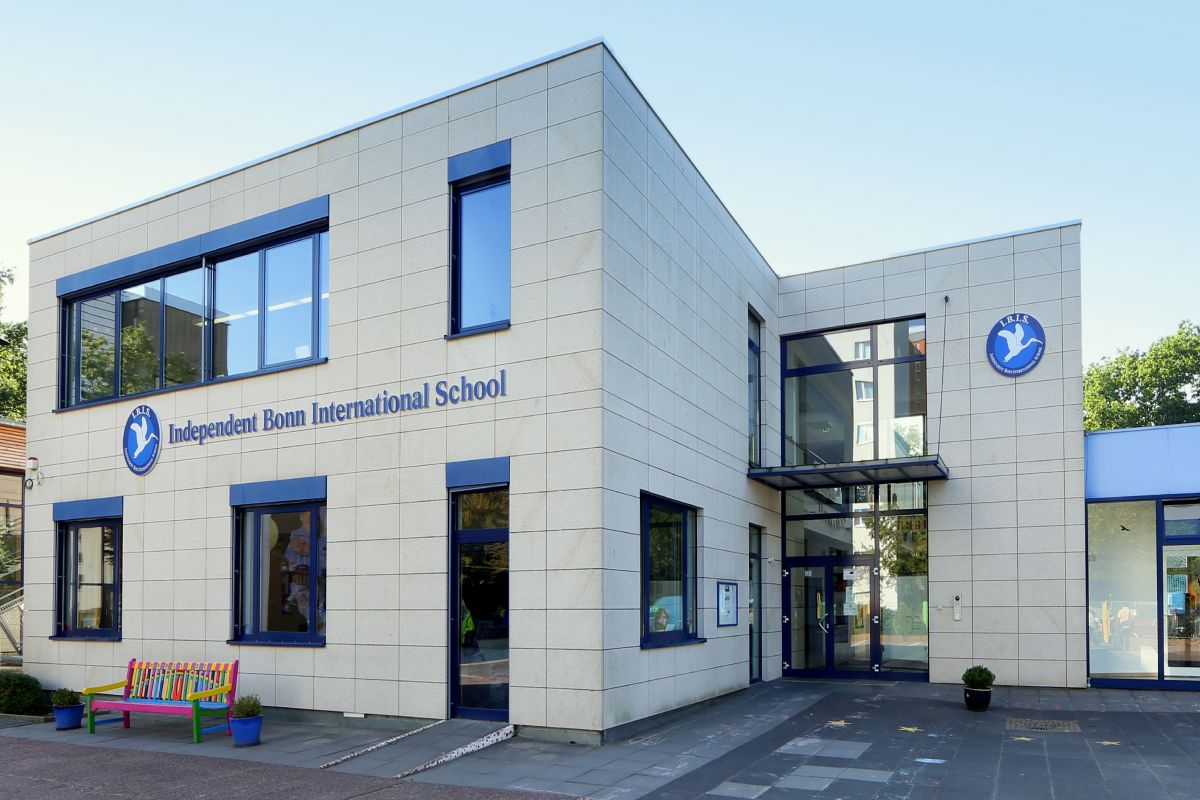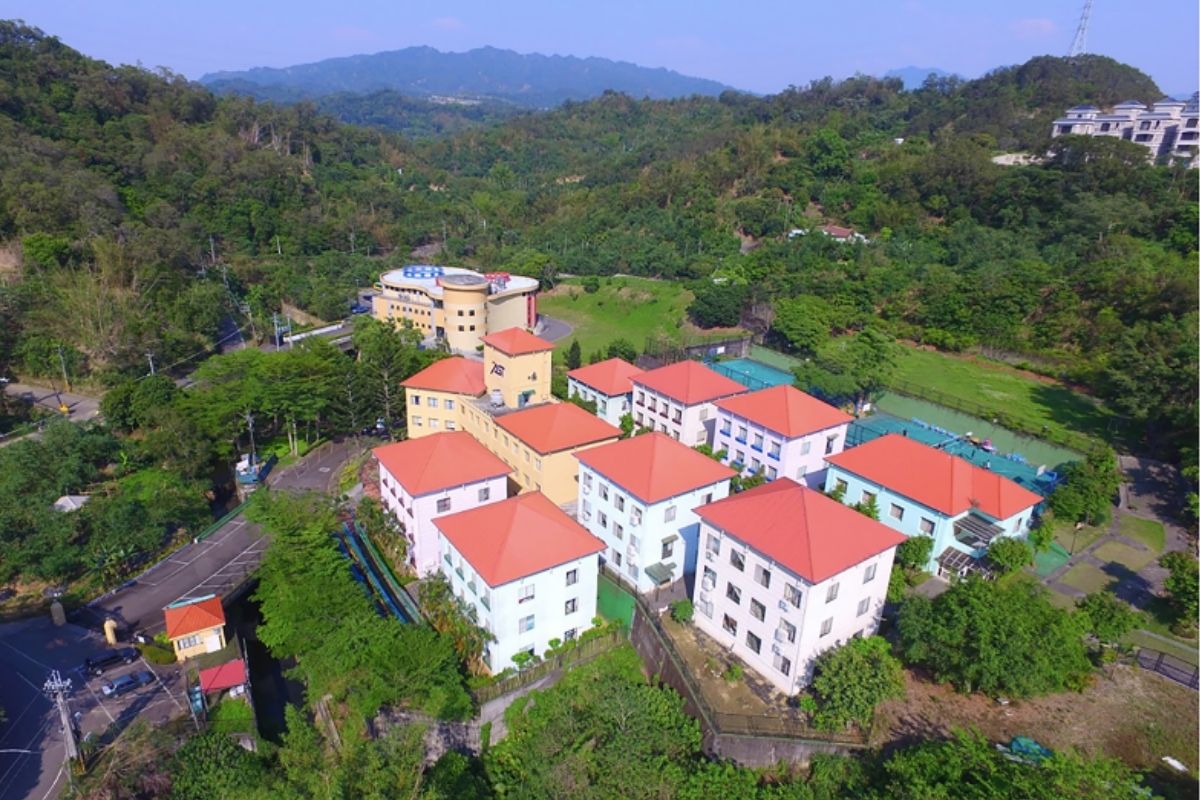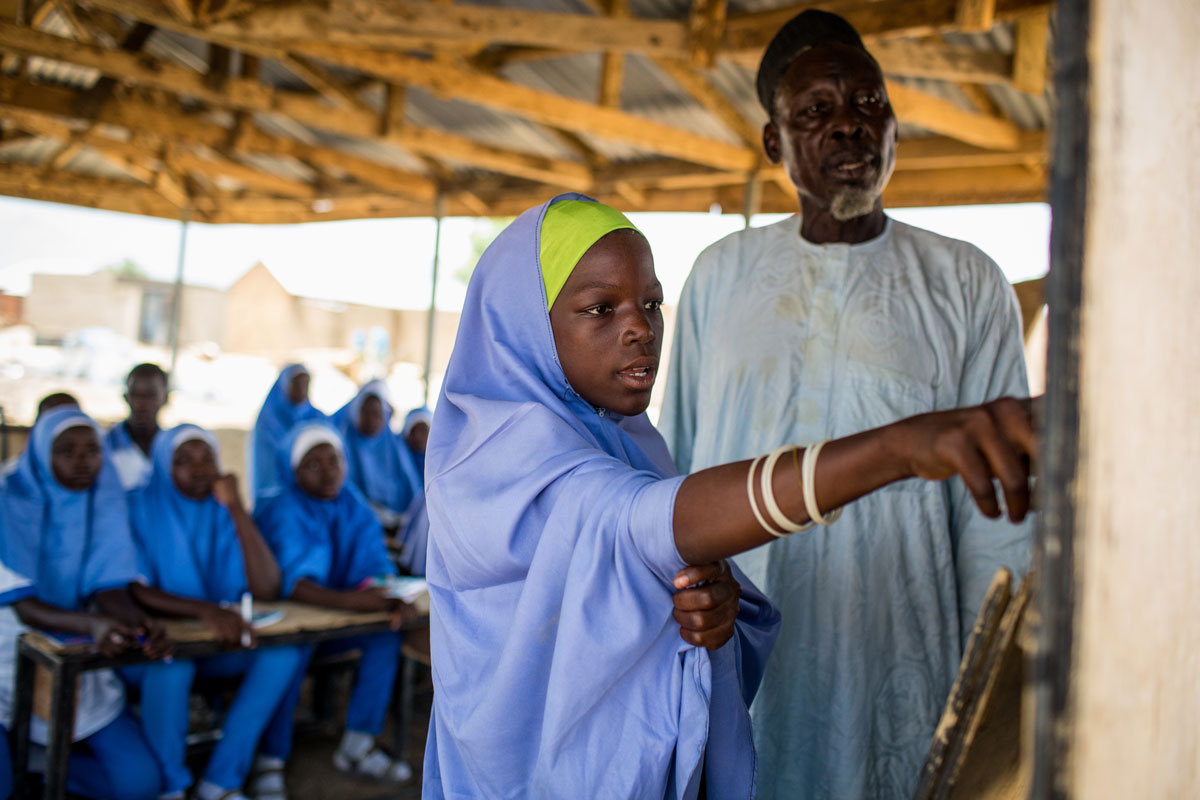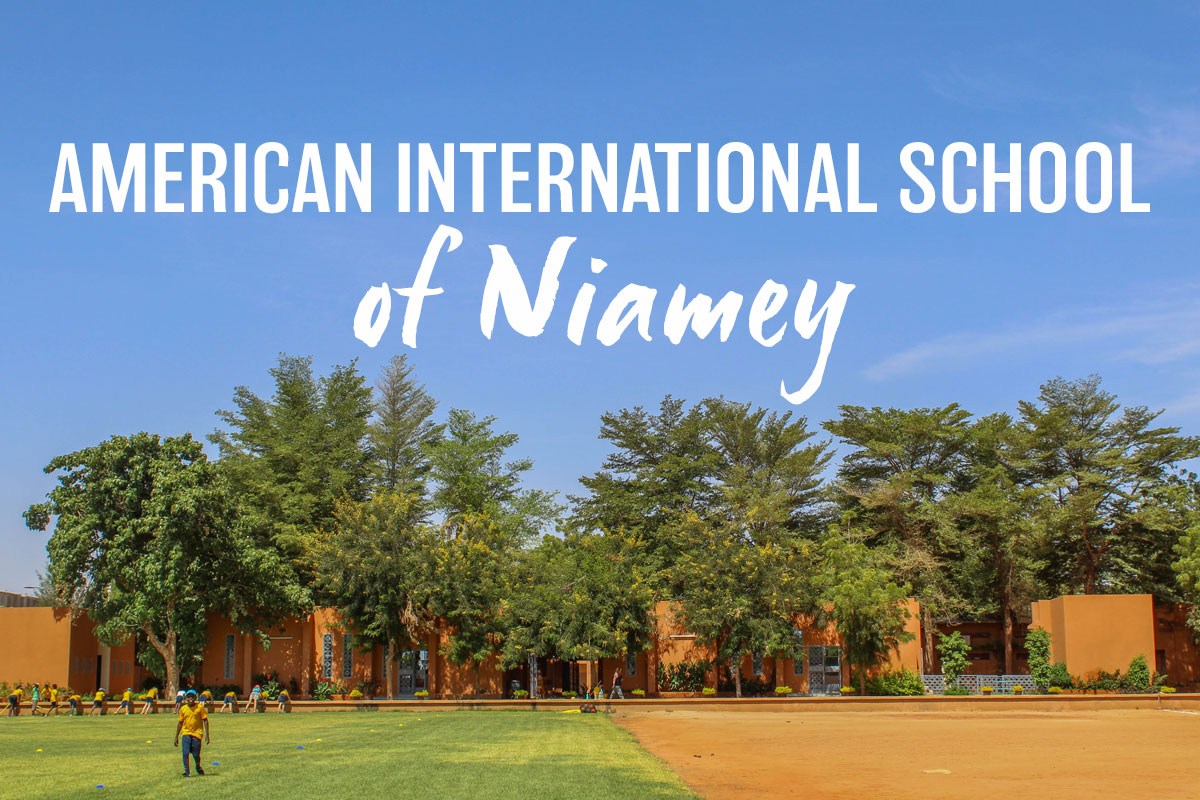Association of International Schools in Africa: An Interview with Executive Director Dr. Peter Bateman
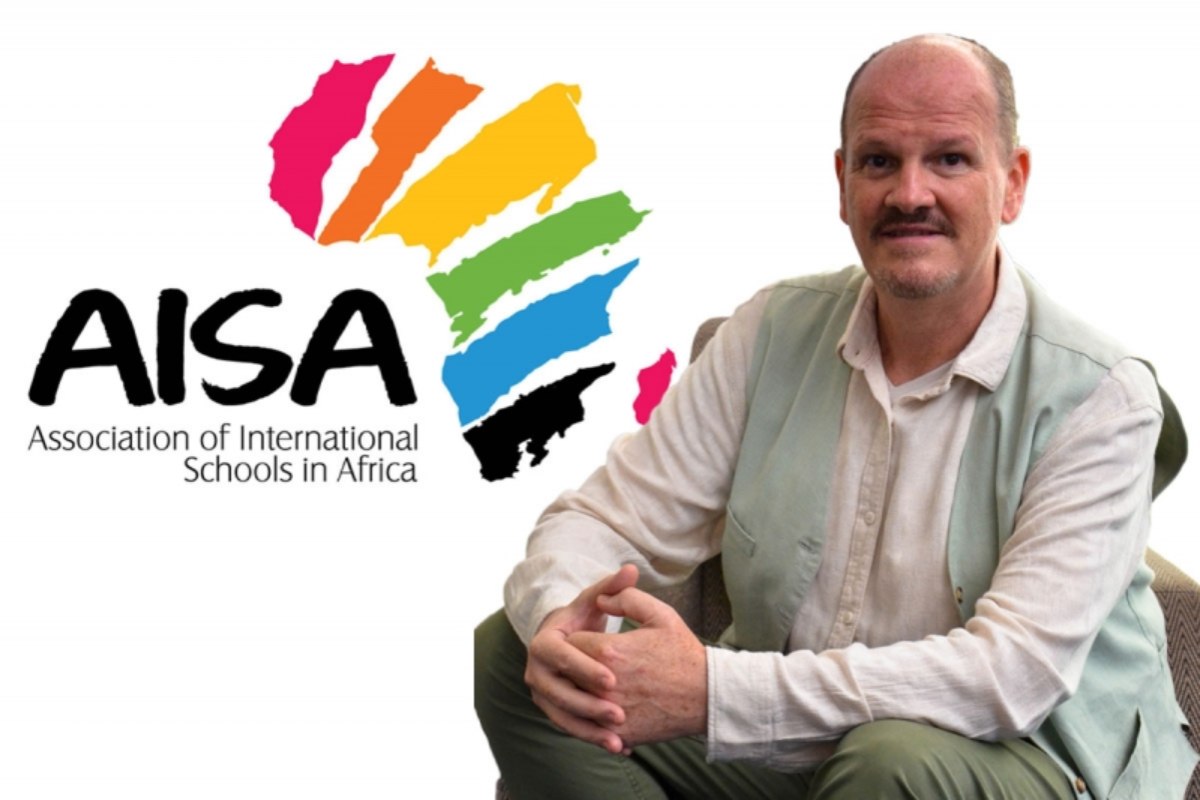
The Association of International Schools in Africa (AISA) is a network of international schools founded in 1969 with assistance from the U.S. State Department. With 76 member schools across 34 countries, AISA represents an important mechanism for these international schools to communicate, collaborate, and engage with each another. With over 10 years at the helm as AISA’s Executive Director, Dr. Peter Bateman has led the organization through significant change and progress, helping launch new initiatives to support educators in the association as well as worldwide. Dr. Bateman recently agreed talk about AISA in a wide-ranging interview with SchoolRubric’s Managing Director, Wallace Ting.
How long have you been in your current role as AISA executive director? What was your background prior to this role?
I was born in Australia, and about 30 years ago, I started my international journey. I originally went to the UK to do my Master’s degree, and after I graduated, a teaching opportunity became available in Jordan. So my first international school was, in fact, the Amman Baccalaureate School in Jordan, where I taught for three years. I then moved to my first school in Africa, which was the International School of Tanganyika (IST) in Dar es Salaam. I stayed there for four years. Twenty-five years later, I am still in Africa.
As to my current job at AISA, I was interviewed for the Executive Director’s post just over 10 years ago and hoped that I could make a contribution to international education on the continent. I always enjoyed teaching in international schools, particularly in Africa. And at AISA, I thought that there was a real opportunity to assist educators and leaders in schools with their work. So I’ve been the Executive Director at AISA for ten years now.
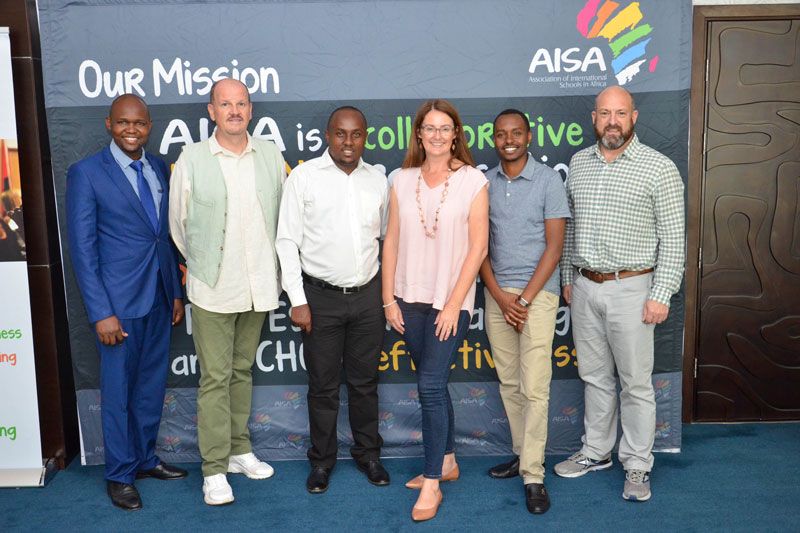
There may be some folks out there who may not understand what a regional association does besides holding an annual conference. Can you help highlight some of the main goals and initiatives of AISA?
Sure. Historically, the regional associations were derived from the need that the U.S. State Department had to support overseas families back in the late 50s and early 60s. As countries in Africa became independent, the U.S. set up embassies in the various countries for those families to receive an education that was somehow equivalent to what they received in the United States. In the 70s, the schools moved towards being more international and sought to collaborate more with each other. AISA was set up to support these schools. In the original conceptualization, this was focused on supporting professional development, namely through the annual conference. In the beginning, these were very small affairs with just five or six schools that got together informally and arranged the conference themselves with some funding from the U.S. State Department.
We’re celebrating our 50th anniversary this year. In the past five decades, the AISA conferences have grown alongside other professional learning events, and we’ve developed many additional support services as well. We have diversified the conferences to target the various stakeholder groups within international schools. In the beginning, it was mainly school heads and educators who attended. Still, now we also support co-professionals such as business managers, human resources managers, admissions officers, librarians, and teaching assistants, among others. Within school leadership, we’ve divided our support to cover mid-level leaders, senior leaders, and of course – school governors. We have quite a strong program in international school governance in the AISA region. Some of the other programs we run are around child protection and well-being, service learning, and blended learning. In the AISA region, blended learning is something that’s really starting to take off as our schools realize that from time to time, they may need to close in an emergency. One of the challenges of operating a school in this part of the world is the political environment. In some countries, it is a little unsettled, and so to be able to reassure parents with confidence that we can continue with their children’s education is important. But blended learning is not only useful in the event of an emergency. At AISA, we believe that blended learning also offers an excellent opportunity to support personalized learning as well and should be embedded in all classrooms.
For a long time, our schools tended to be isolated enclaves often set in a compound behind a big wall. That meant that the interaction between the school, community, and the folks in the cities where our schools are located was often quite limited. The interactions that did take place tended to be based on an old idea that community service is something you “did to others.” Still, we have now seen the learning opportunities that exist for our students alongside their peers in the community, and so a new approach called service-learning was adopted. The reason we changed it from community service to service-learning was because the learning aspect for students in our schools is as important as their ability to contribute to the communities where they live. The structure of our schools’ service-learning programs has become quite refined and quite sophisticated in the AISA region. Every year, we run a service-learning event called the AISA Global Issues Service Summit (AISA-GISS) that brings students from all across Africa to share what they’re doing in the service learning programs and projects at their schools. Most importantly, they are involved in service-learning and community projects while they are at the summit, so they’re not only looking at global issues theoretically but also very practically. We [AISA] support that event both financially and logistically.
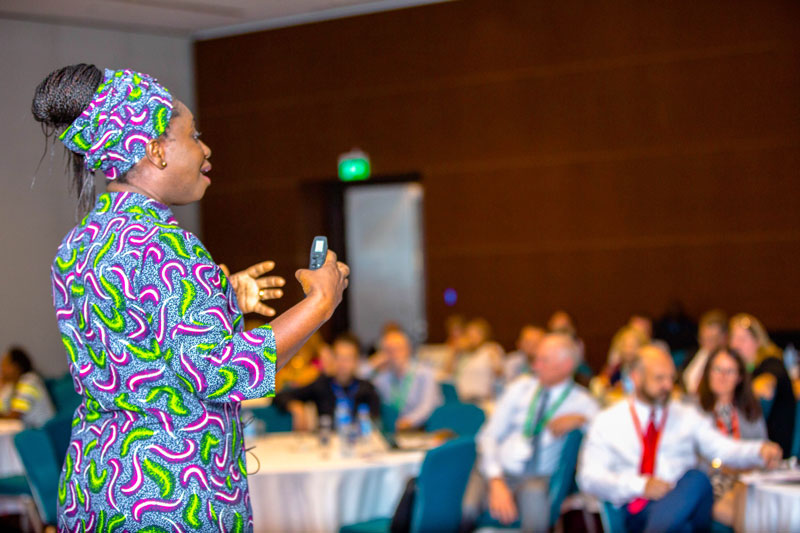
Recently, we have been working to refine our professional learning programming. We know that getting on a plane in Africa is taxing, not only in terms of logistics and cost but also in terms of the impact it has on the environment. We continue to offer our annual conferences, and these are still great learning events with many people attending. Nevertheless, we’ve also started offering what we call Professional Learning Institutes (PLIs) at host school venues across Africa, which are very targeted and very accessible. They are not only targeted in terms of content but also based on levels of understanding. We have two differentiated streams for our PLIs. The first we call Discover and Explore for people who are just starting a new topic or subject area. We have another stream which is called Embed and Sustain for those educators who already know quite a lot about an area but are interested in furthering their knowledge, skills, and dispositions to become the best educators possible. All of this is reflected in AISA’s mission around improving student learning. If what we do doesn’t do that [improve student learning], then we ask ourselves why we are doing it and why we would be engaged in a program that isn’t focused on students.
So AISA has gone from being quite a simple association with a very loose structure to being quite a focused, learning-centered organization. As we support educators, leaders, governors, and those who are working with students, we hope that we have an impact on improving learning throughout the continent in our member schools. We are a member organization, and only accredited international schools can join AISA. That’s because the education market here is enormous, and we are in no position to be able to support all schools in Africa. Therefore, in keeping with the original intent, we’ve decided to help international schools. We originally started with American international schools and American embassy schools, but now our membership is very diverse with British schools and other international schools as well. Any internationally accredited school that offers an international curriculum and meets our other membership criteria can join AISA, and we are happy to work with them and try to assist them in whatever way we can.
Thanks for providing that overview. The next question should be a little easier: Why is the AISA office based out of Kenya? Is there a history behind that?
When the AISA office was initially established, it was run by a part-time staff member. The first person to hold that post was a staff member at the International School of Kenya (ISK). Over time, the workload became so great that the AISA board decided that they would employ somebody full time, and the school offered AISA the physical space for an office, and we’ve been at ISK ever since. Throughout the years, they have been very supportive of the AISA office, and we’re very happy to be there and hope to be there sometime still. Having said that, the AISA staff are now actually located around the world. Our Director of Professional Learning is in the UK, our Director of Child Protection, and Well Being is in Brisbane, and I am currently in Cape Town, where we prepare for the upcoming conference. Our support staff is in Nairobi. I continue to make several school visits across Africa throughout the year, so I’m on the road a lot. All of this means that we need to remain a very adaptable and member-focused organization.
Given AISA’s broad membership requirements, along with the fact that there are a lot of member schools with fairly distinct characteristics such as governance, size, and demographics, how do you consistently balance that diversity with being able to support all types of schools within your membership?
That’s a great question, and we often discuss this as an organization. We have some very small schools in West Africa, maybe with an enrollment of just 50 or 60 students, and their resource base is therefore quite limited. They do amazing work with the resources available, but their support needs are different. If you are head of a small school, you’re not just leading the school and managing its day to day operations; you’re also the curriculum coordinator, the business manager, the person that looks after the buses to make sure that the kids get home, and the one that makes sure that the meals in the canteen are on time. It’s a very different role and a quite demanding role requiring a specific skill set, and what we’ve found is that this group of schools needs a particular focus from AISA. So we’ve initiated what we call the Small Schools Initiative to assist these types of schools.
Our middle-sized schools have typically appointed additional leaders and co-professional support staff. We find that these roles are usually more disaggregated, so we’re able to start to offer various types of professional learning support, specifically targeting these different groups. Finally, we have around ten fairly well-resourced and relatively large schools, but these schools also have a different set of needs. For example, the sophistication of governance learning in these larger schools has reached a point now where we can see that good governance is more or less embedded within the school culture. As a result, we don’t have to provide “board training 101” but rather offer opportunities to explore generative governance that extend these boards to become more creative and innovative in terms of the work they’re doing.
The different types of programs AISA offers these diverse schools mean that they each can push forward with their trajectory regardless of size, staffing levels, or budgets. Everybody is moving forward, but of course, it is challenging. AISA has limited resources as well, so it is challenging to be able to make sure that we offer something that benefits all of our membership, and it takes quite some planning to be able to do it well. In recent years, we’ve become much better at it because we understand it better as a result of the research we conduct. When I started ten years ago, it was very much a simple one-size-fits-all approach to professional learning. Now, we’re running programs that are differentiated, targeted, more accessible, and very focused on improving student learning.
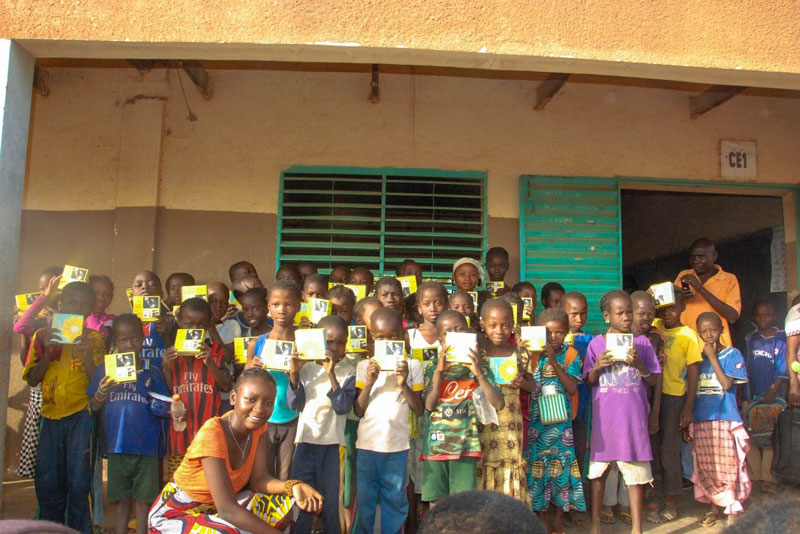
AISA seems like the regional association that took the initiative with respect to child protection. How did that start in the first place, and where do you see child protection continuing to evolve from here?
That’s a good question, Wallace. The child protection program really started around 2014 and was spearheaded by the board chair at the time, Dr. Dennis Larkin, who was also the head of the Lincoln Community School in Accra, Ghana. He and his partner, Dr. Lois Engelbrecht, had been working in the child protection area for some years but discovered that international schools were not really doing much in terms of supporting this important aspect of child safeguarding. This was also an area that I was interested in for AISA, since we had become increasingly concerned about the lack of checks and balances among international schools, the support and legal frameworks in the countries where they were set up, and the approach of other regional associations around the world – meaning that those employed at our schools who had a prior history of child abuse in one country might be able to secure employment in another with their prior history remaining undisclosed or undetected.
With the support of the AISA Board, we formed a working group that collaborated over two years, from late 2014 to late 2016, to address this critical need. I must stress that it was the dedication of Dr. Dennis Larkin and Dr. Lois Engelbrecht, who pushed to make sure that the work at AISA was done well. A few years ago, there were some high-profile child abuse cases in international schools that came to light, which you may have heard about. Luckily, we were already well into our child protection program development work, so AISA had a strong base from which to respond when those cases came to be. We were then able to take the resources that we were developing for this region and rework them for international schools around the world. We were able to organize and publish the AISA child protection handbook, protocols, policy templates, and other resources and offer them to everybody in international schools across the world, and it became a very significant resource. It also became a catalyst for schools around the world to really start to talk about the issue of child protection because once these high profile cases happened, people realized that they needed to be better prepared – many turned to AISA to help them do that.
What’s interesting is that now [five years later] we’re reflecting on our child protection program, and we’ve come to realize that the need for intervention is much broader than just the child protection focus we have had to date. It’s somewhat ironic that you’re questioning me about this now because I just spent the last three days with my staff looking at a new, more holistic approach that focuses more broadly on well-being.
AISA is about to initiate a very comprehensive well-being program that will still include a significant focus on child protection, but also now expands that to support the well-being of students, educators, and school leaders. Living and working in the AISA region can be a very challenging environment for our heads, educators, support staff, and even parents. When it comes to addressing these well-being challenges, it’s very different than what they’re used to back home. I mean, I love living in Africa, and I’ve been here for twenty-five years, but different people have different ways of viewing their life and work here and it impacts them differently. Our school communities need to be able to access mental health and well-being support systems, and AISA intends to devise a well-being program that helps our schools achieve just that.
At the conference on November 2019, we’ll be launching the AISA well-being program. The program will begin as a research-based program, taking place as a pilot in several of our member schools that we hope will eventually have a significant impact on improving well-being across our community of schools. We now know that although child protection is still very important, we must ensure that the well-being of adults is supported, too. If you don’t have counselors, educators, or school heads coping well, then it’s difficult for that whole system of child protection to work. The idea of the pilot is to invite schools to identify case studies for well-being support that are particularly pertinent to them. There is no one-size-fits-all in this model. The case studies will be refined so that there is some coherence in terms of structure and reporting, and then we’ll publish them for others to learn from. Following these pilots, we’ll identify some core principles and good practices and publish an international school well-being handbook and offer it to the world.
With financial help from the Office of Overseas Schools, the first pilots will start this year and will run over four years. It’s important that we learn from these prototypes and then adjust and get our programming right because if we don’t get it right, then we risk doing more harm than good. With that in mind, we’ve decided that case studies that show what doesn’t work are as equally valuable as the success stories. While some national education systems have been working on well-being in schools for some time, we in the international school sector are really just starting. Luckily, we’ve been able to connect with some very knowledgeable people around the world who are generous with their time and expertise in support of this project.
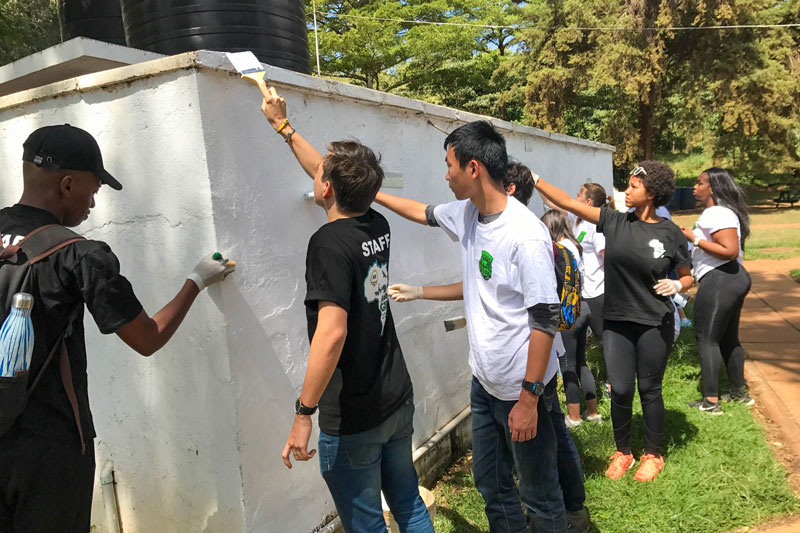
That’s great. So to clarify, this is an initiative that is focused not just on students and children but also on teachers, administrators, et cetera?
Yes. And even parents. Just as something of an aside, we work with the International Centre for Missing & Exploited Children (ICMEC) on an initiative called Parents as Partners, which looks at the key role parents, particularly parents who are stationed overseas, have in the well-being of their children. Some parents may struggle and need support, because very often they have high profile jobs with high profile agencies that might add additional pressure to their parenting role or impact on the well-being of their children. The program focuses on their rights and responsibilities, promoting healthy relationships, and developing response mechanisms and family resilience.
Besides child protection and well-being, governance appears to be an important area of focus for AISA. What are some of the common governance issues you see in schools?
Another good question, because about a week ago we held our AISA board meeting and the area of governance in our schools was discussed. The board agreed it [governance] should remain an ongoing part of our strategic plan for the next four years. Governance has been a part of our strategic plan for some time, and parts of our governance program have been successful. However, it is a complex area. The reasons it is so complex include the ones I alluded to earlier: our schools are very diverse, and some are also very remote. We cannot produce a “one size fits all” governance learning program that will be effective in all our schools.
We’ve learned over the years that AISA schools have relatively high turnover rates among board members. Some parents are just coming into their position in the country and send their children to an AISA school. Soon after their arrival, they may get elected to the board with no real experience or idea of what it means to serve on an international school board or what their role is. Some of these folks will take this as a learning opportunity, while others may have had experience in other board settings and are simply starting new at the school. Inexperienced board members can, on occasion, become a very vocal or even disruptive influence. Now, sometimes those sorts of disruptive influences are important, but only if they’re informed – if they are not informed, they can become quite damaging. If there is a strong school head that is proficient at orienting their board or there are strong policies or procedures in place along with a culture of good governance, this is less likely to happen. In our region, we also often have new heads of school coming in. So if you’ve got this combination of a high turnover of board members and a new head resulting in very few people who know the strategic direction of the school, it becomes a challenging mix, and it can only be luck if that goes well. Some schools that know there will be a high turnover and may not have the wherewithal to facilitate school-based governance training for their board members turn to us [AISA]. For new or inexperienced boards, we focus on their strategic and fiduciary responsibilities using the AISA Code of Governance as a resource.
As I mentioned earlier, we also have a number of high-functioning boards that may have been around for a bit longer, or because of the diligent work of the head and the board in previous years, have successfully created a solid framework for embedding sustainable governance practice at the school to the point where it becomes independent of the individuals involved and operates generatively.
I guess that’s the stage that we’re trying to support all AISA schools arriving at. When a school board can move beyond only the fiduciary and strategic, they access this generative phase where they become very creative and really look at the opportunities that an international school can offer. Now, as you can imagine, designing a governance learning program that covers all of these nuances is really very challenging – and that’s why we’ve decided we’re going to take a differentiated approach to governance programming in the AISA region.
AISA has some explicit membership requirements with respect to accreditation and international-mindedness, but with governance being such an important strategic goal of the association, I wonder if you and the board have considered implementing some kind of membership requirement with respect to governance?
Well, it’s interesting because the accreditation protocols AISA uses as part of our membership criteria all have sections in them around good governance.
Right. So you’re kind of piggybacking off of the accreditation protocols and making the assumption that if a school is accredited, then by virtue of said accreditation, they must be adhering to certain governance principles.
When it came to child protection, AISA and a number of other organizations – CIS (Council of International Schools) being key among them – were able to have some really great discussions with the accreditation agencies. And now, of course, child protection protocols are part of the accreditation protocols for almost all of these agencies.
With respect to governance, a similar approach applies. The accreditation protocols can be very robust with a detailed exploration of the quality of governance at the school, but equally, there can be a much more basic approach taken that might be as simple as “Do you have a board manual?” and checking a box if the answer is yes. Obviously, that’s not sufficient because a school just saying they have the document in place doesn’t mean that the document is in any way influencing the quality of governance. So while we use accreditation protocols, including those around governance, as evidentiary support for our membership criteria, we’re also aware that more work needs to be done on our part to reinforce quality governance in AISA schools.
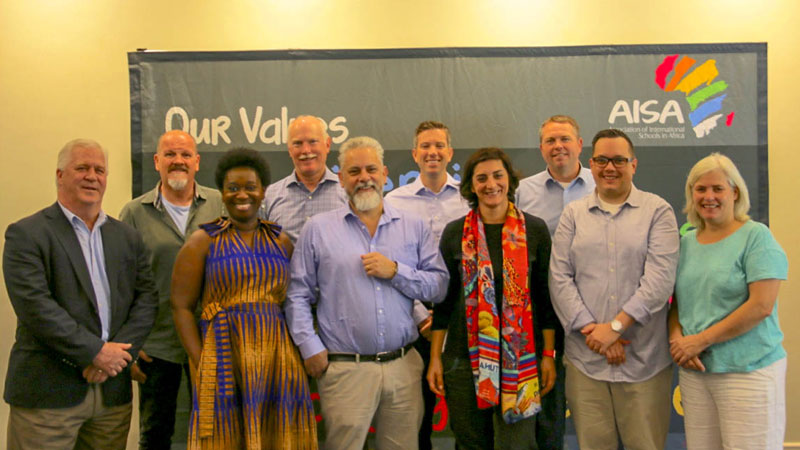
Last question about governance, and asking you to be a little introspective. The AISA governance model itself has a board that is comprised of school directors at member schools. Do you find this to be an effective model, and how are you able to work logistically with all of the board members who are scattered across a fairly large continent?
One of the blessings of working with a board where the members are themselves heads the school who, in turn, have their own boards is that they understand very, very well what their role is, and they appreciate very much when they’re diverging from it. At AISA, I have, by far, the highest functioning board I’ve ever worked with. They are very reflective, very well prepared, and they are extremely generative and mindful of not being operational. They catch themselves. Somebody will have a question that may be moving into the operational, and they are so skilled and self-aware that they self-adjust their discussion back towards the generative.
AISA board members are heads of schools located in nine different countries in Africa. Recently, we’ve started to make much more use of technology to support our work and to become more environmentally friendly. We’ve started conducting two of our four annual meetings online using Zoom. We also use an online communication and documentation program called Basecamp to conduct offline conversations and to provide access to keyboard documentation digitally. AISA no longer prints off any board documents for our meetings.
A couple of trends in international education seem clear. First, more international schools around the world have seen higher numbers of host country student enrollment, and second, more and more international schools are opening each year. Do you see these trends also taking place in Africa, and if so, how do you see this affecting AISA’s membership or scope of services?
Generally, more host country nationals are enrolling in international schools in Africa. I believe this mirrors a wider trend, finally, towards the establishment of a middle class. As a result, parents are able to look for alternatives to national school systems to educate their children. Unfortunately, in many African countries, the state or national education system is quite strapped financially, and very often, they don’t have the resources to be able to do what we can do in international schools.
That said, our schools have to make decisions around their enrollments because there’s always the possibility that you become a glorified national school with “international” in the title. A lot of what we value in international schools is the diversity of students, parents, and educators from all over the world coming together to learn. That’s the beauty of it. Everybody gets to experience first-hand what intercultural understanding is. And if you’re internationally-minded, that’s because you’ve got people from all over the world and you’re with them, in some cases, for years learning with them in classrooms, playgrounds, and social groups.
I don’t think we’re at the point in most AISA schools where there are a large number of host country nationals enrolled. There may be isolated schools, but it’s a question of balance. But there’s also the bottom line to think about. High enrollment means sufficient income from tuition fees to run a quality school, and so there is a very practical reason to include host country children in the system. If, in times of trouble, a school can “save itself” by enrolling host country students and these students and their families can soon start to experience what it means to be part of an international school community, that has to be beneficial as well. So it’s not that you would exclude people just on the basis that they are from the host country, but rather rejoice in the ability of the school to be able to invite those students into that rich diversity and quality international education our schools are so proud of.
Countries in Africa appear to have increased susceptibility to school closures, whether due to quarantine, violence, instability, or insecurity. What are some of the things that AISA does to help prepare schools before and during a closure?
The World Virtual School project is another U.S. State Department funded program that AISA participates in, but as I mentioned earlier, we approach it a little bit differently and embrace the personalized learning opportunities that blended learning classrooms offer. I’m happy AISA is pursuing this because my Ph.D. work was focused on online learning in the context of Africa.
I strongly believe that you can’t “fire drill” the emergency closure of a school. If the riots or whatever emergency is happening, you can’t have teachers, parents, and kids rushing out the door, quickly put stuff online, and tell them to go home and learn effectively. That simply won’t work. This “fire drill” approach used to be the norm, but we’ve moved away from it entirely. We’re encouraging our schools to take on blended learning as part of a more widely considered approach.
In all effective schools, there is an appropriate mix between online learning and face-to-face learning in the classroom. There’s always a balance, and we encourage schools to find out what works best for their students and their teachers, whose role becomes much more of a facilitator of learning. We believe that blended learning should become embedded in all classrooms throughout the year. Whether it’s once a week or ten times a week, if you include individualized learning online to the extent that your school’s resources allow, both students and teachers will develop a level of comfort that won’t have to suddenly be found as folks are departing in an emergency. The idea is that in an emergency situation when that change from face-to-face to online learning has to happen quickly, the learning environment can adapt quickly and effectively to become 100% online. It’s a controlled process instead of this panic-induced gap in thinking or practice that has to be filled, sometimes literally, overnight. You’re just changing the balance. The world is less safe than it was, and more and schools, wherever they are, are having to think about this.
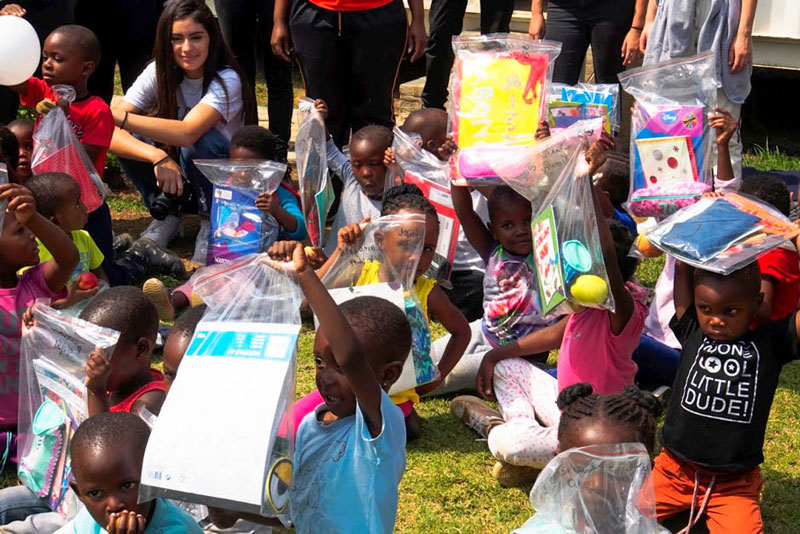
Regarding specific things that AISA does to help – it really depends upon the size of the school. For example, for the Ebola situation a few years ago, several of our small schools in West Africa needed to close – some for a considerable period of time. What most of those schools were able to do was to work within their well prepared blended learning protocols, and as a result, they were able to keep learning going through that extended closure until the crisis was over.
But do you know what AISA is also able to provide? It’s moral support. School leaders want to know that it will be alright. I have to say that we are blessed in this region to have a group of schools and a community of heads across the continent that are generous and supportive of collaboration rather than competitiveness. For example, in the DRC (Democratic Republic of the Congo), there were some security issues for the school arising from the political situation during the elections. Many of those students moved across the Congo River to their sister school in Brazzaville for a few weeks and learning continued. Now, no one is saying this ideal – not for our schools and certainly not for the countries where this unrest happens. But there is a particular willingness in our region for schools to support each other. At AISA, we really do value being a living, caring association of schools.
I actually spoke to Jeff Trudeau (director at the American International School of Monrovia) the other day. He speaks very highly of AISA and the support both the organization and the heads in the region provided.
He was exactly who I was thinking about when describing the Ebola crisis earlier, actually. His resilience and positivity throughout that situation were extraordinary. Even though his community was fragmented around the world, the way he was able to communicate and reestablish hope over a very extended period was really something to watch. We all celebrated when that school was able to reopen back onsite.
On your membership directory, I counted 18 schools that identify with the word American in their name, and clearly, the U.S. Office of Overseas Schools has a founding history and continues to support AISA. Not that one is right or wrong, but what are your thoughts about an American-centric type of education versus a more internationally-minded curriculum? Where do you see this thing headed?
In some cases, this is a historical carryover from when the schools were first set up. Some American international schools now offer an international curriculum such as the IB (International Baccalaureate), and some international schools offer the AP (Advanced Placement) or College Board courses emanating from the United States. So it may not all be in the title. At last count, I believe there are about 35 schools in the AISA region that are supported by the U.S. State Department Office of Overseas Schools.
Put simply, without the financial support of the Office of Overseas Schools, AISA would cease to function. In addition to the support they provide directly to AISA for our programs, there are also some programs that the Office of Overseas Schools (A/OS) targets specifically in A/OS schools. Some of these initiatives are during the summer, such as AERO (American Education Reaches Out), and A/OS also supports their schools directly via grant money. As part of my regular visits to AISA schools, I have visited almost all of the A/OS supported schools. And what I see is that they are all internationally-minded, even if they have the “American” moniker in their name. I believe these schools value their place in Africa, they are proud to serve the needs of their American constituents (as well as others) and of the fact that they are international schools even if they’re running an American curriculum. I was just at the American International School in Cape Town, which runs the AP program – but if you walk into that school, it is a glorious celebration of internationalism. It is an extremely well-run school, but it doesn’t have the feel of being exclusively American in any sense. As with many of our schools, the American students bring to the school their own strong intercultural competencies, and these stand proudly alongside the competencies of the rest of the school community. And that’s the real joy of it – our schools are amazing catalysts for promoting international understanding.

You’ve been at AISA for the past ten years, Africa, for the past twenty-five. How much longer do you see yourself at AISA, and what are some personal and professional goals going forward?
In the past two years, we’ve talked a lot about transition planning; it’s not that I am planning to leave anytime soon but more a reflection of how a well-governed organization should have a robust transition plan in place. As a result, I’m proud to say that if something were to happen to me or when I eventually move on, this organization would certainly be able to continue to thrive.
Having just come out of our strategic planning process, first with the board last week, and then with my team just this past weekend, there are some inspiring things in the pipeline for AISA. Key among these is the AISA well-being program. I see the need first-hand because, in my travels, I interact with educators and heads of schools, and the signs are evident. Regrettably, until now, the well-being of our school communities, or lack thereof, often goes unnoticed and unaddressed even while it impacts the quality of learning in our schools. I have a strong sense that if AISA can support well-being interventions in our schools, then that will be a significant contribution to international education. It would feel good to be part of that.
I’m also interested in looking at AISA’s role in climate change and protecting the environment. We have discussed this year, our 50th, about what kind of impact we have by running a conference in Cape Town, where we encourage 450 to 500 people to get on planes to come here. There may always be some kind of role for gathering together as a group, but we have to consider how we’re going to compensate for that. We’ve teamed up with a partner here in South Africa from whom AISA is going to buy trees to help offset or reduce the carbon footprint of all of the staff and facilitators we’re bringing in for the conference. We’re going to encourage all of our delegates to do the same. Together, we’ll be able to plant thousands of trees in Africa, and it is, of course, worth every cent because we can’t just ignore our impact on the environment anymore.
As for myself, I still really enjoy living and working in Africa. I go home to visit Australia from time to time to see friends and family – but gosh, I get bored sometimes while I am there! They call Australia the lucky country – there’s a comfortable certainty to life there. But having lived overseas for so long, I often feel an urgency to get back “home” to Africa, which I think is the case for many people who have lived overseas for an extended period. Africa is so diverse and so vibrant – thousands of languages, diverse and generous people with a long cultural history. Fantastic music and dance which, I just love – and scenery that has often left me in awe.
This article is available and can be accessed in Spanish here.

